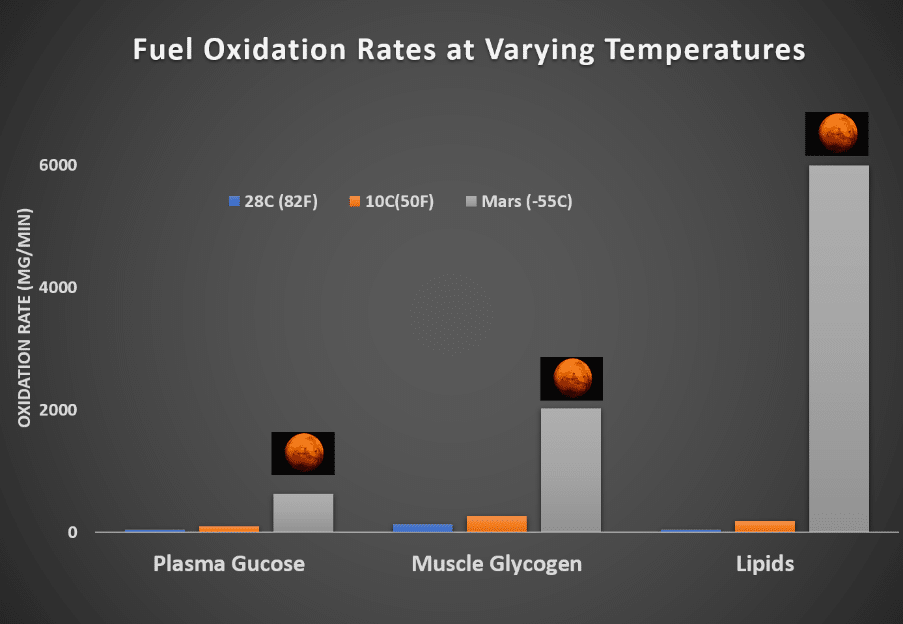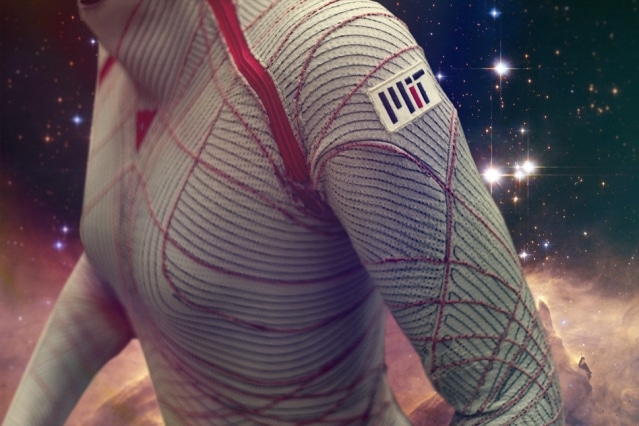Martian nutrition: How runners will fuel
Carb-loading for the Red Planet marathon might prove more difficult than simply gorging on a pre-race pasta dinner. Since they will be shivering and burning a lot more calories not only during, but before the race, runners will simply have to eat more on Mars during the pre-race period to fully saturate their muscles with glycogen.
Just getting plates of pasta to Mars will be a major issue. After years in transit, many of the nutrients in any food shipped to Mars will have been lost, and deep-space radiation will have degraded much of a food’s chemical and physical structure. Preparing and shipping food to Mars for the runners to eat requires special methods. Anyone care for high-pressure processed, microwave sterilized, freeze-dried spaghetti and meatballs…anyone?

Mid-race nutrition is equally important. As stated earlier, the drastically cold temperatures will result in a higher rate of glucose use and glycogen depletion, so the runners will need to fuel more often to keep glucose stores elevated in the face of increased use of these from shivering, coupled with the metabolic demand of running. Marathoners, who rely heavily on their glycogen stores into the later miles of the race will need to ingest glucose during the race at a rate exponentially higher than the recommended 25-60 grams per hour to avoid hitting the dreaded wall around mile 20 of the Red Planet marathon. This drink will likely have to be specially formulated with a higher glucose content.
Authors of a 1998 paper in Experimental Physiology provide evidence that providing a drink containing 15% carbohydrate was able to maintain blood glucose levels better than one containing just 2% during a cycling test to exhaustion (1). For this reason, Martian aid stations will need to occur at regular intervals and provide runners with carbohydrate-rich gels, drinks, or tasty freeze-dried space snacks.
What they’ll wear
Until we evolve into actual Martians, humans won’t get away with running unprotected on the surface of Mars. For now, technology will prove vital to success as runners on this new planet. Newly minted Martian sports scientists and gear technologists will be recruited to design a top of the line marathon-specific spacesuit.

This suit will provide a sealed, pressure-controlled environment, help maintain some warmth and control body temperature, riding a fine line between protection and optimal range of motion. A protective suit is necessary: in the low atmospheric pressure environment of Mars, bodily fluids would boil. This is known as the Armstrong limit of pressure, which Mars sits well below.
Additionally, runners will develop severe impairments in blood pressure maintenance due to the reduced atmospheric pressure. This drastic reduction in blood pressure was demonstrated in a Journal of Physiology study from 2015 (2). Studying astronauts on the International Space Station, researchers noted a reduction in blood pressure of 8-10 mmHg, mainly due to central volume expansion. The marathon gear will resemble something of a wet suit– a design which is able to solve the low-pressure problem by using super tight wrapping (instead of gas-pressurization, it uses mechanical counter-pressure) (3). This leaves the body mobile. Wrapping the lower limbs in this counter pressure “fabric” will allow full range of motion at the ankles, knees, and hips,
The suit will require an enclosed helmet with breathing apparatus for runners to get their oxygen which is lacking in the Martian environment and dispense of the large amount of atmospheric as well as metabolically produced CO2. But don’t even think about attempting a snot-rocket.
Additionally, features of the suit crucial to completing our space-race might include an airtight hole in the mask so that runners can ingest their mid-race fluids and gel packs.
One final, and perhaps most vital feature will be the shoes. Just as elite runners have custom shoes designed to their unique gait pattern and foot size, Mars marathoners will need footwear tailored with the same precision and comfort in mind. As it turns out, the painful condition of onycholysis (separation of the finger/toe nail from the nail bed) is not just a problem among ultra-endurance athletes, but astronauts too. Ill fitting gloves combined with the intra-suit pressure can spell disaster (and pain) for anyone carrying out activities in space, and this would surely apply to the feet as well. After 26 miles of running in cramped space-boots, it can only be expected that runners might lose one or more toenails. To prevent this, it will be necessary for runners to have Mars boots fit to their particular foot size, strike, and biomechanics.
Can They Do It?
Just as Opportunity Rover completed its own Red Planet marathon, so too will humans eventually cover 26.2 miles on foot over the dusty red surface of the fourth planet from the Sun.
Will it be fast? Probably not – but let’s hope we break the current standing record of 11 years, 2 months. Evolving a new, skipping gait required for efficient running on Mars will take some time, just as did the adaptation of lower limbs and body structure of Australopithecus to that of the modern Homo erectus, a body ideally formed for endurance running. Tendons and ligaments will have to adjust to the new microgravity environment, and it will take time for muscle fibers to regain their strength and capacity. The deconditioning of the cardiovascular system (due to fewer hemoglobin molecules, reduced ability to both supply and utilize oxygen, and decline in heart and lung function) will take some time to adapt to. Along with the various environmental factors (extreme cold, hypoxia, and dangerous levels of radiation), runners will certainly have a slow marathon debut.
We will eventually design equipment and training protocols that allow us to traverse 26.2 in record times on Mars. Remember, the first marathon run by Pheidippides resulted in his keeling over in death upon arrival. Since then, we have perfected running tactics, advanced our knowledge of performance, and unlocked human physiology such that it is now possible for man to run 26.2 miles at an astonishing 4 minutes and 41 seconds per mile, something once thought impossible.
Perhaps, some day, the elusive 2-hour barrier will be broken, not on a curated and well-paced course in Italy, but near Endeavor crater, some 54.6 million kilometers away.
Read previous instalments
The First Mars Marathon: Part 1
https://www.physoc.org/blog/the-first-mars-marathon-part-1/
The First Mars Marathon: Part 2
https://www.physoc.org/blog/the-first-mars-marathon-part-2/
References:
- Galloway et al. The effects of substrate and fluid provision on thermoregulatory, cardiorespiratory, and metabolic responses to prolonged exercise in a cold environment in man. Experimental Physiology. 81 (1998); 419-430
- Norsk et al. Fluid shifts, vasodilatation, and ambulatory blood pressure reduction during long duration spaceflight. The Journal of Physiology 593.3 (2015); 573-584
- Shrink-wrapping spacesuits. Jennifer Chu, MIT News Office. September 18, 2014. http://news.mit.edu/2014/second-skin-spacesuits-0918
